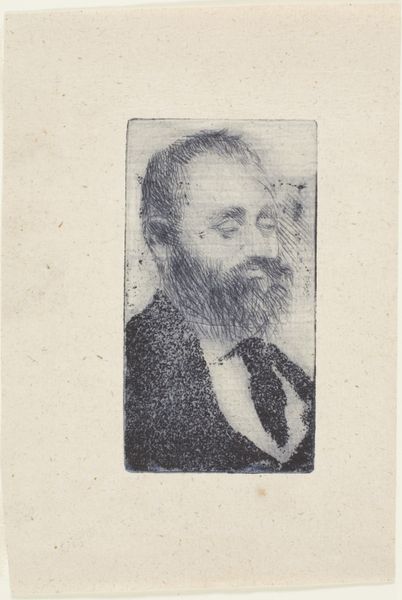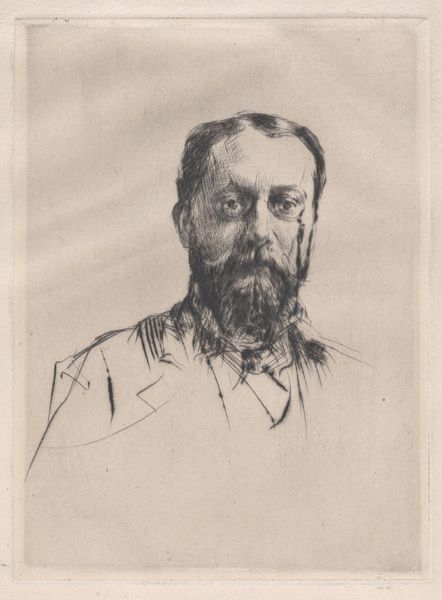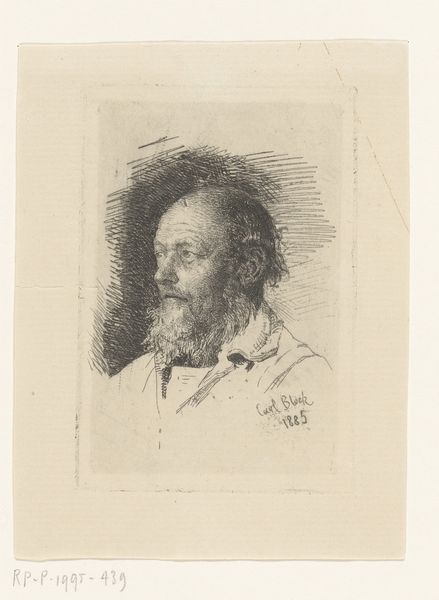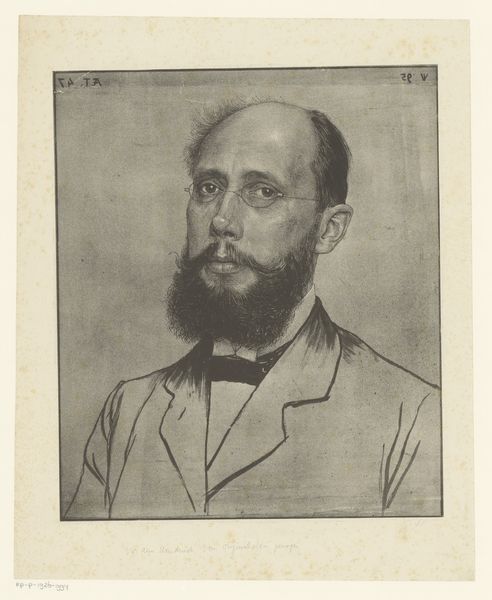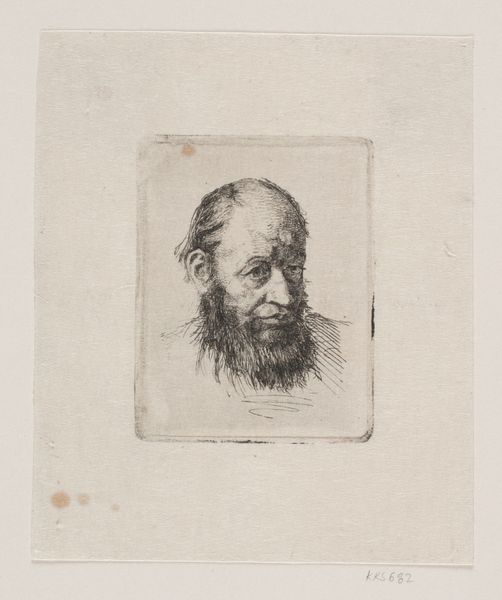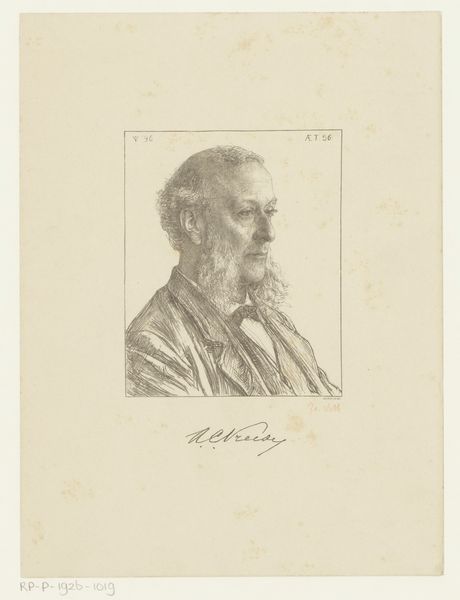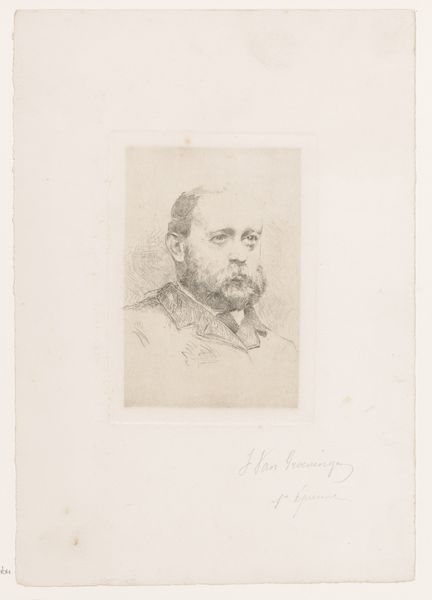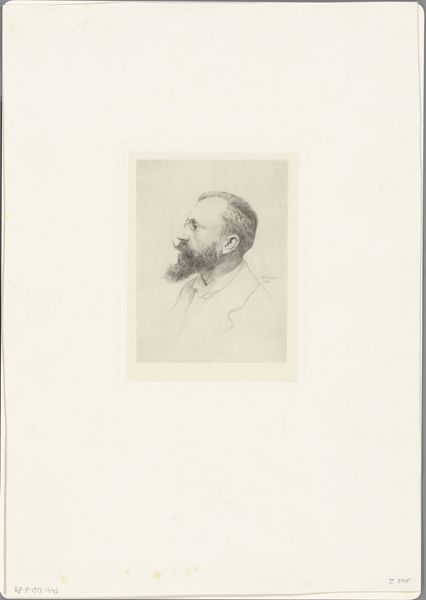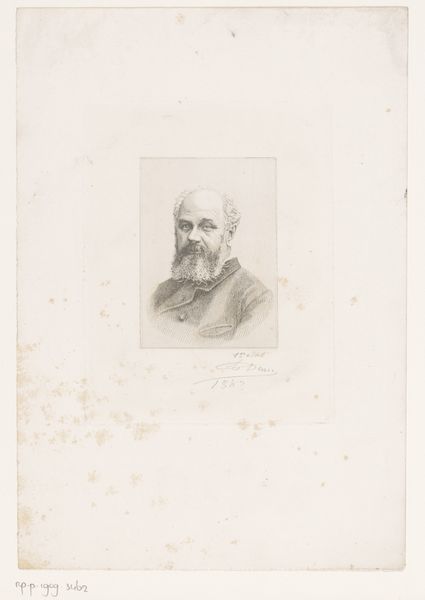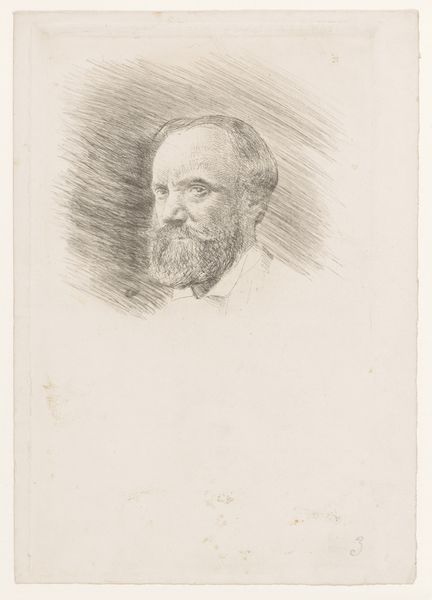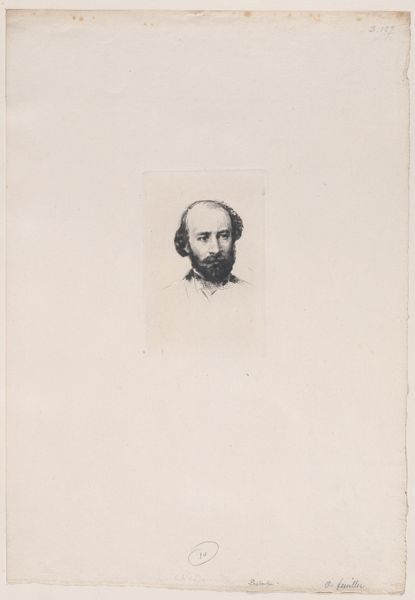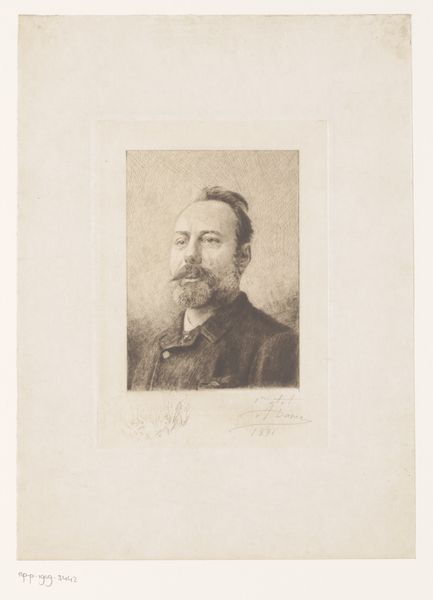
drawing, print, etching
#
portrait
#
pencil drawn
#
drawing
#
16_19th-century
# print
#
impressionism
#
etching
#
pencil sketch
#
pencil drawing
#
men
Dimensions: Sheet: 8 7/8 × 5 7/16 in. (22.5 × 13.8 cm) Plate: 4 3/4 × 3 1/8 in. (12 × 7.9 cm)
Copyright: Public Domain
Curator: Before us, we see "Portrait of Comte Lepic," a remarkable etching created in 1876 by Marcellin Desboutin, currently residing at The Metropolitan Museum of Art. Editor: It's striking how modern this feels. The looseness of the lines, almost like a quick sketch, captures the subject's essence without feeling overly formal. The print work shows through its etched quality. Curator: Desboutin was known for his prints and for portraying figures from the artistic and literary circles of Paris. Lepic himself was an artist and engraver, so it makes sense that they gravitated to similar social circles. It certainly seems a knowing portrayal between fellow creators, don't you think? Editor: Absolutely. Look at the economical use of line. It must have taken an interesting acid-resist ground to allow for such precise removal. One has to imagine the labour involved in preparing the plate. I can see what might resemble "foul biting" on the corners of the impression. That is common. Curator: It really speaks to the burgeoning Impressionist milieu that questioned traditional hierarchies of the Academy. The casual style certainly defied the rigid standards promoted within institutional artistic circles. Desboutin exhibited in many salons and portrayed many influential artists of his time. Editor: And that speaks to something essential. It wasn't simply about technique or breaking standards; it was about how labor and access defined the production of imagery and etched plates. The distribution, even within an elite circle of artists, relies upon both means of consumption and circulation, don't you think? The etching suggests to me a challenge against classist structures through making images with radically democratised techniques of representation. Curator: That's a very incisive point. It also shows how printmaking became a viable medium to share artistic values and challenge what was considered "high" art. Desboutin certainly captured that rebellious mood of 1870s Paris. Editor: Yes. Looking at this now, it reminds us that art-making is fundamentally embedded in labor and material, which shifts away from celebrating the "artistic genius." I can sense this subtle, but definite difference now that you have talked us through the social situation of production. Curator: It is an artwork which still resonates even today, offering many ideas on society and visual materiality for new interpretations, which I feel so fortunate that you could lend your insights towards here today. Editor: Absolutely! And seeing it within its material and historical frame just enriches the viewing experience.
Comments
No comments
Be the first to comment and join the conversation on the ultimate creative platform.

